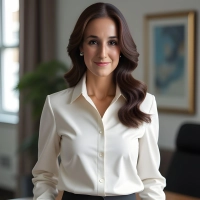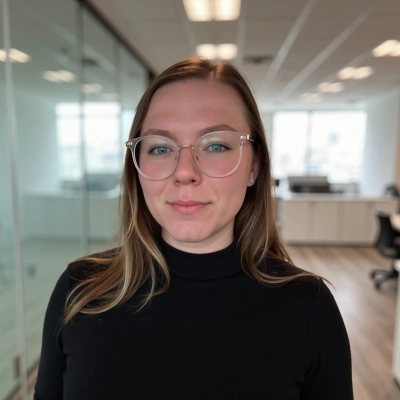8 Strategic Frameworks That Reveal Client Blind Spots
Most businesses struggle to identify the gaps in their own strategy, often missing opportunities that are obvious to outside observers. This article breaks down eight frameworks that help uncover these hidden challenges, drawing on insights from industry experts who have worked with companies at every stage of growth. These practical approaches address everything from positioning clarity to automation potential, giving leaders a structured way to spot and fix blind spots before they become costly mistakes.
Align Voice, Value, and Visibility
One framework that has consistently helped clients uncover blind spots is what I call the "Voice-Value-Visibility" audit. It evaluates whether a brand's messaging, positioning, and content are aligned with how its audience actually perceives value. Many teams focus heavily on what they want to say, but overlook how it lands with the audience and whether it supports long-term credibility.
We start by mapping the brand's current voice across channels, then assess if the value being communicated matches audience expectations, and finally measure how visible that value truly is online. This layered view exposes where effort and impact are misaligned. It works better than standard audits because it connects brand expression with measurable business relevance, bridging the gap between storytelling and performance.

Integrate Purpose, Presence, Partnership, and Perspective
The Four-Dimensional Leadership Lens: Why Most Blind Spots Live Between Quadrants
I've developed what I call the Leadership Integrity Framework—a four-dimensional approach built around Purpose, Presence, Partnership, and Perspective. What makes it effective at revealing blind spots isn't the individual dimensions themselves, but how it surfaces the gaps between them.
Most leaders I work with arrive with strength in one or two quadrants. They're clear on their values (Purpose) or skilled at building relationships (Partnership). The blind spots emerge in the integration: a leader with strong Purpose but underdeveloped Presence might have clear values that never translate into felt impact. One with excellent Partnership skills but weak Perspective might build great teams that lack strategic direction.
The framework works because it treats leadership as a dynamic system, not a checklist. When a client says "my team isn't responding," we don't just look at communication skills. We explore: Are your stated values actually guiding your decisions under pressure? (Purpose-Presence gap). Is your stress showing up in ways you don't realize? (Presence). Are you designing for shared visibility or just proximity? (Partnership). What patterns are you missing in the wider system? (Perspective).
The real power is in the questions themselves. "What am I not seeing?" opens different territory than "What should I do better?" By helping clients recognize which dimension they're neglecting—and more importantly, how that creates ripple effects across the others—we find leverage points that standard leadership models miss. The framework doesn't just identify blind spots; it reveals why they persist and what's needed for sustainable growth.

Map Customer Journey Friction Points
We've developed a strategic framework called the "Customer Journey Friction Map," which consistently reveals clients' blind spots. This goes beyond standard funnels by visually plotting the emotional and cognitive effort required at every touchpoint (discovery, evaluation, conversion, retention), scoring it from 1 (seamless) to 10 (high-friction).
It works better than standard approaches because standard analysis often focuses only on drop-off rates (the 'what'), whereas our map focuses on the underlying psychological barriers and points of frustration (the 'why'). By identifying these high-friction points—like unclear pricing pages or over-complicated forms—we diagnose the true root cause of low conversions, leading to much more impactful solutions.

Build Foundation Before You Scale Channels
At Forge, we built the FORGE Framework to help wellness and supplement brands see their blind spots before they become barriers to growth. It's a marketing framework designed to connect creativity, compliance, and conversion into one continuous system and only triggers a new marketing channel when the rest of the system has been optimized for ROI.
It starts with Foundation, where we build compliant, conversion-ready websites and brand positioning that can actually pass FDA and platform scrutiny. From there, we move into Attract, which focuses on compliant, high-performing paid and organic acquisition across Meta, TikTok, and Google. In the Convert stage, we connect those channels to automated email, SMS, and retargeting systems that turn traffic into predictable revenue. Finally, Scale focuses on retention and advocacy through subscriptions, loyalty programs, organic social, and PR. We have found that this framework can be used to build from scratch or to diagnose and triage. Its been extremely helpful in educating clients and helping them choose the right budget-aligned next steps for their brand.
Strip Complexity to Reveal Fundamental Issues
I developed a simplified consulting approach that uses 3-4 key principles to break down complex business challenges into manageable components. This framework helps clients recognize blind spots by stripping away unnecessary complexity that often obscures fundamental issues requiring attention. Our clients consistently report better implementation outcomes compared to traditional consulting approaches because the recommendations are straightforward and actionable rather than theoretically impressive but practically challenging.

Clarify Positioning Precision Before You Pitch
What's worked best for my clients is taking a framework-based approach instead of relying on one-off tactics. Most agencies jump straight to pitching or content without first clarifying positioning precision — the narrative that connects audience psychology, timing, and message.
By grounding every campaign in my proprietary frameworks (like PRISM Ascendtm and Dual Catalyst Visibilitytm), we focus on why a story deserves attention before asking who should tell it. This structured, insight-led process consistently delivers higher-quality media features, stronger engagement, and longer-lasting brand equity than traditional "spray and pray" PR approaches.

Account for Hidden Access and Logistics Costs
The strategic framework I developed that consistently reveals blind spots for clients is the "Hidden Cost of Access" assessment.
The approach is simple: Standard evaluations focus only on the cost of the material and the labor. That misses the biggest blind spot for a homeowner: the liability and labor cost associated with accessing the roof structure. Most clients overlook the difficulty of getting materials up, the required scaffolding, the precise placement of the crane, or the disruption to their neighbors. Our assessment framework forces the client to account for this non-material, hands-on cost from the beginning.
This framework works better than standard approaches because it shifts the focus from the roof itself to the external environment that supports the job. For instance, a beautifully landscaped yard might add $5,000 to the job because it limits crane access and requires extra protection—a crucial blind spot. We present a clear trade-off: higher cost for protection, or acceptance of risk for lower cost.
My advice to other business owners is to stop framing the job cost around materials alone. Invest the time in creating a framework that forces the client to see the external, logistical costs and risks associated with their unique property. That commitment to revealing the entire, hands-on picture is the only reliable way to eliminate surprises and secure genuine client buy-in.
Reimagine Workflows with Thousand-Fold Automation Capacity
For the last decade, I helped businesses make data and AI work for them. In the last year, I keep seeing a major blind spot that almost no business is recognizing, and I keep asking the same question to uncover it.
We keep imagining AI as something that we apply to our existing workflows bringing a 30% improvement in efficiency and we feel happy. However, I argue that this is almost always a bad strategic choice.
The real opportunity that no one is recognizing is to think of AI as an agent of change that can help us do more of the same, by multiple orders of magnitude. I regularly ask "what if you could have 1000 people doing this specific task?" or "how would you do things differently if you had 1000 robots doing this for you?".
AI is bringing down cost and speed of labor and opening the door to automation at scale, yet business owners are struggling to imagine this.
Of course, there is a need for strong strategy, systems and data to make it work, but the main current gap is in the strategic choices that business owners are making, where they regularly restrict themselves only to incremental gains because that's what worked in the past. But a new paradigm is here, and the businesses that recognize this are capitalizing on it.




